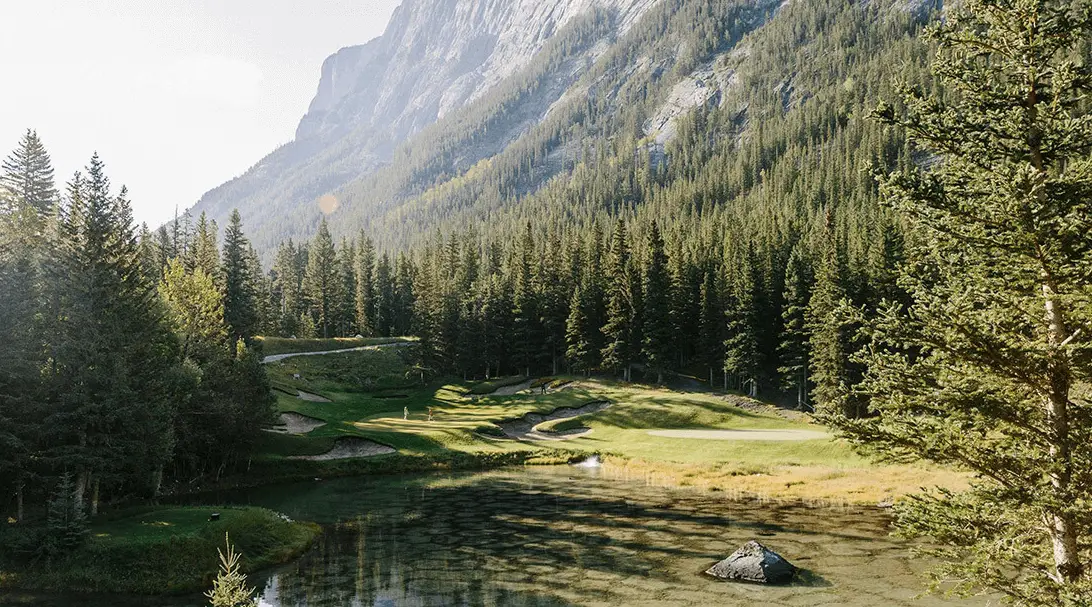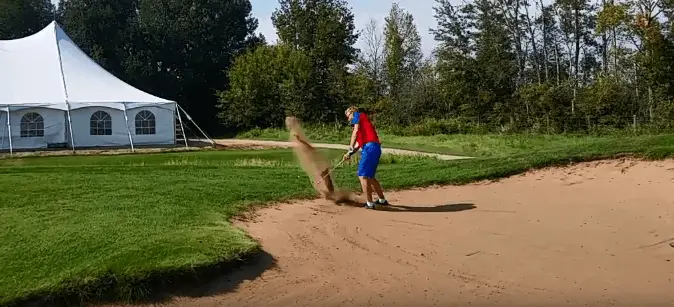The Different Types of Golf Courses

Golf is a popular and challenging sport enjoyed by millions of people around the world. One of the things that make golf so interesting and varied is the wide range of golf courses that it can be played on.
From the rolling dunes of a links course to the tree-lined fairways of a parkland course, each type of golf course offers its own unique set of challenges and rewards for players.
In this article, we will take an in-depth look at the different types of golf courses and their specific characteristics, as well as the challenges they present to players.
Links Golf Courses
A links-style golf course is a type of golf course that is typically built on a piece of land that is near the coast, and it is characterized by its natural, rugged terrain and fast-draining soil.
These courses are usually located in areas with a cool, temperate climate and are known for their rolling hills, deep bunkers, and large, undulating greens.
Links-style courses are generally considered to be among the most challenging and demanding types of golf courses to play, as they require a high level of skill and shot-making ability.
They are also known for their unique, wind-swept landscape, which can make them particularly challenging to play on windy days.
There are many popular links-style golf courses around the world, but perhaps the most famous of all is the Old Course at St. Andrews in Scotland.
This course is considered the “home of golf” and has a long and storied history dating back to the 15th century. The Old Course is a true links course, located on the coast in the town of St. Andrews in the eastern part of Scotland.
It is known for its challenging layout, with deep bunkers, undulating greens, and constantly changing wind conditions.
The Old Course is quite often home to the Open Championship, one of the four major professional golf tournaments, and has hosted this event more times than any other course.
Other notable links courses include Royal County Down in Northern Ireland, Royal Dornoch in Scotland, and Ballybunion in Ireland.
Parkland Golf Courses
A parkland-style golf course is a type of golf course that is typically located inland and features a more manicured, cultivated landscape than a links-style course.
Parkland courses are typically characterized by their tree-lined fairways, water hazards, and smaller, more undulating greens.
These courses are generally easier to play than links courses, as they tend to have fewer bunkers and less dramatic changes in elevation.
They are also usually more forgiving of wayward shots, as the rough and other hazards are not as penal as on a links course.
Parkland courses are popular with a wide range of golfers, from beginners to more experienced players, and are often found in more built-up, urban areas.
Perhaps the most famous of all parkland-style golf courses is Augusta National Golf Club.
This course is the home of the Masters Tournament, one of the four major professional golf tournaments, and is known for its iconic layout, featuring well-manicured fairways, beautiful azalea plantings, and challenging greens.
Augusta National is consistently ranked as one of the top golf courses in the world, and it is known for its difficulty and the high level of shot-making that it requires.
Other notable parkland courses include Pinehurst Resort in North Carolina, USA, and Winged Foot Golf Club in New York, USA.
Mountain Golf Courses
A mountain-style golf course is a type of golf course that is located in a mountainous region and is designed to take advantage of the natural terrain and scenery of the surrounding area.
These courses are known for their dramatic changes in elevation, as well as for the stunning mountain views that they offer.
Mountain courses often feature narrow, tree-lined fairways and small, well-bunkered greens, and they can be quite challenging to play due to the changes in elevation and the thin air at high altitudes.
In addition to golf, mountain courses are also popular for the recreational opportunities that they provide, such as hiking, mountain biking, and other outdoor activities.
There are many mountain-style golf courses around the world, but perhaps the most famous of all is the Banff Springs Golf Course in Banff, Alberta, Canada.
This course is located in the beautiful Rocky Mountains and offers stunning mountain views from almost every hole.
The Banff Springs course is known for its challenging layout, featuring narrow fairways, deep bunkers, small greens, and dramatic changes in elevation.
It is consistently ranked as one of the top golf courses in Canada and is a must-play for any golfer visiting the Banff area.
Other popular mountain courses include the Ko’olau Golf Club on the island of Oahu in Hawaii, USA, and the Legend Golf & Safari Resort in Limpopo, South Africa.
Executive Golf Courses
Executive golf courses are shorter and more compact than traditional courses, and they are designed to be played in a shorter amount of time.
These courses are often ideal for beginners or for players who don’t have a lot of time to spend on the course.
Executive courses typically have holes that range from par 3 to par 5, and they generally have fewer hazards and bunkers than traditional courses.
One of the main benefits of executive courses is that they are generally more accessible and less expensive to play than traditional courses.
They are also a great way for players to work on their short game and improve their overall golf skills.
Par 3 Golf Courses
Par 3 golf courses, also known as pitch and putt courses, are shorter courses that only have holes that are par 3.
These courses are generally shorter in length and require fewer clubs than traditional courses, making them ideal for beginners or for players who want to work on their short game.
One of the main benefits of par 3 courses is that they can be played in a shorter amount of time than traditional courses, making them a great option for players who have limited time to spend on the course.
They are also generally less expensive to play and more accessible, as they often have lower green fees and fewer restrictions on who can play.
These courses offer players a chance to work on their short game and enjoy a more laid-back and casual round of golf.
Final Thoughts
There is a wide variety of golf courses available to players, each with its own unique set of challenges and characteristics.
From the rolling dunes of links courses to the shorter, more compact par 3 courses, there is something for every type of golfer.
No matter what type of golf course you choose to play, it’s important to remember to have fun and enjoy the game.






